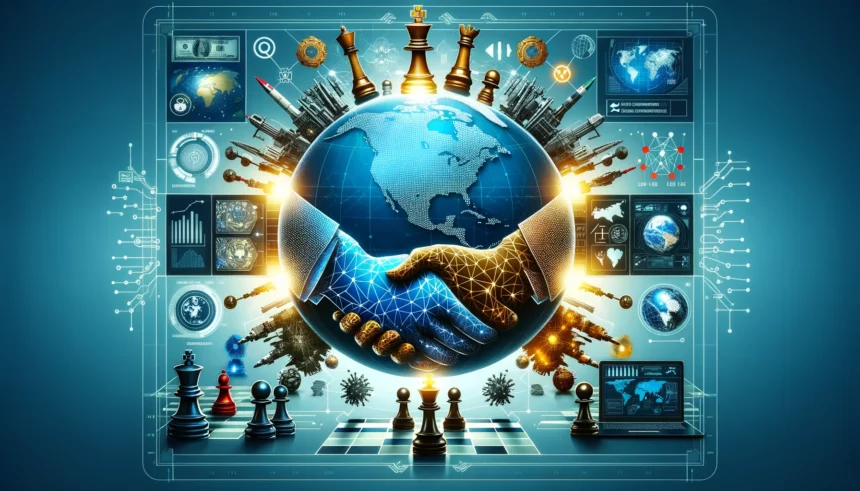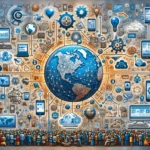Listen to the article now:
As the world spins faster into the future, the battleground of geopolitics has dramatically shifted from traditional arenas to the digital and technological fields. It’s a race not just of might or economic power, but of innovation and foresight. The focus has turned to areas like cloud computing, semiconductor manufacturing, cybersecurity, and the vast universe of artificial intelligence. These are not just sectors; they have become the frontlines where countries compete, each competing for a leading position in the technological renaissance.
Consider the move by President Joe Biden, a decision that reverberated around the world. With a stroke of his pen on an executive order, Biden set boundaries on U.S. investments in crucial Chinese tech sectors, including semiconductors, quantum information technologies, and artificial intelligence. This wasn’t merely a policy shift; it was a direct message in the ongoing dialogue of power between the United States and China, tinged with the underlying theme of national security.
Similarly, the European Union’s decision to probe into Chinese subsidies for electric vehicles wasn’t just about cars. It was about ensuring the European market doesn’t get overwhelmed by cheaper imports, yes, but it also highlighted the deeper layers of technology like battery innovation and autonomous systems. This investigation is a glimpse into the intricate dance of global economics, technology, and policy.
The reasons for these geopolitical chess moves are multifaceted. National security is at the forefront, with the understandable concern that relying on foreign tech could compromise a nation’s data privacy and safety. Economic competition cannot be overlooked either, as the dominance of foreign tech can potentially stifle domestic innovation and economic health. But perhaps more intriguing is the pursuit of technological dominance. It’s a clear signal that in today’s world, being a superpower means leading in technology.
Yet, for all the rivalry, there’s an undeniable need for global cooperation. The challenges we face today, from climate change to space exploration, require a collective effort. The construction of the International Space Station and joint climate initiatives are testaments to what humanity can achieve when we work together. They show that while competition in technology is fierce, collaboration can lead to monumental achievements.
The narrative of technology in modern geopolitics is not just about the cold calculus of power and strategy. It’s about recognizing that in this interconnected world, our futures are intertwined. The steps we take today, whether towards competition or cooperation, will define the landscape of tomorrow. In navigating this landscape, it’s crucial to remember that the goal is not just technological superiority but a better, more secure future for all.
As we stand at this crossroad, the path we choose must be informed by a nuanced understanding of both the opportunities and challenges that technology presents. It’s a delicate balance, requiring dialogue, empathy, and a shared vision. The future is not a zero-sum game; it’s a shared journey. And in this journey, our greatest strength lies not in the technologies we create but, in our ability, to come together, across borders and beyond differences, to harness them for the greater good.
















